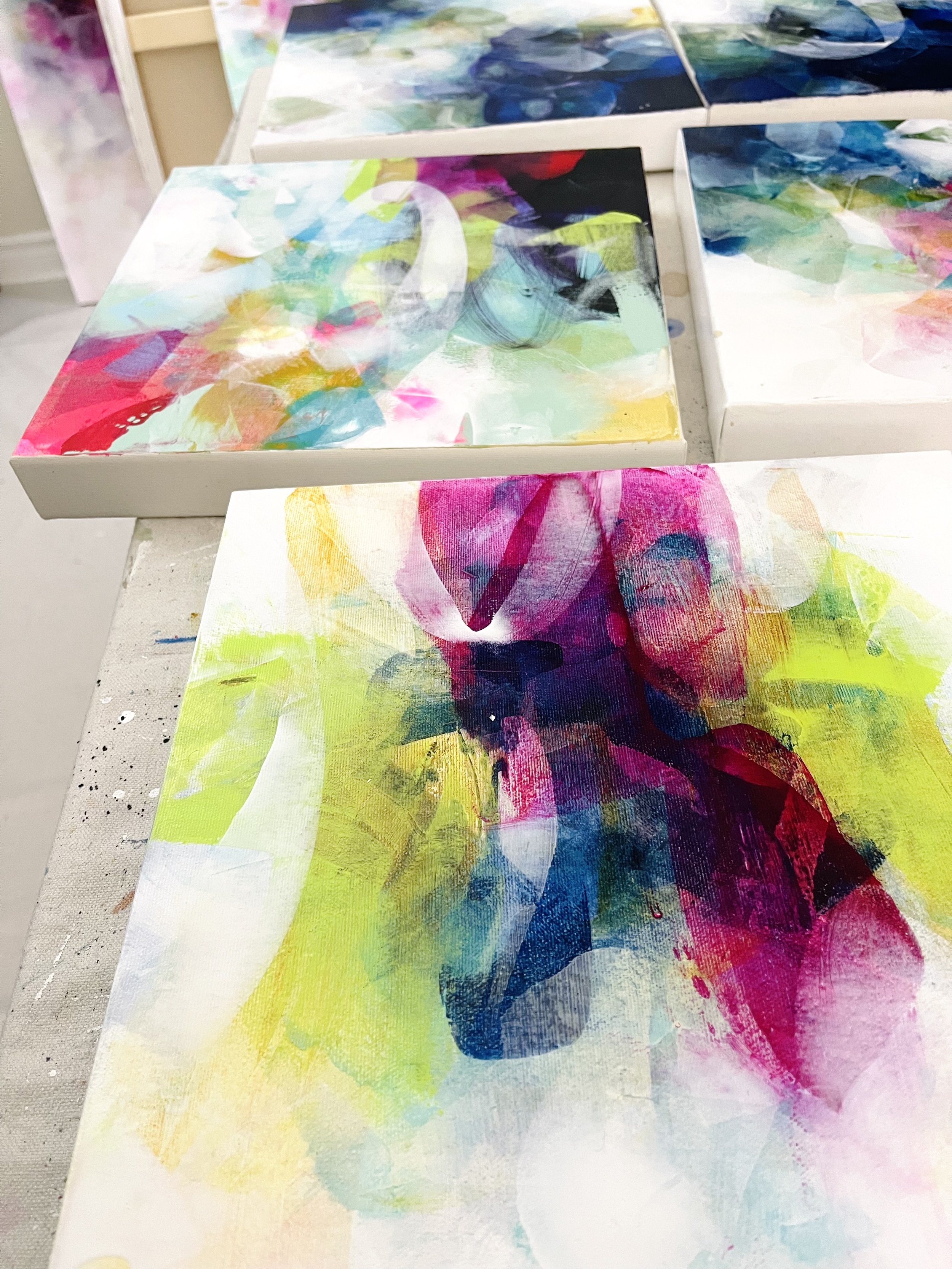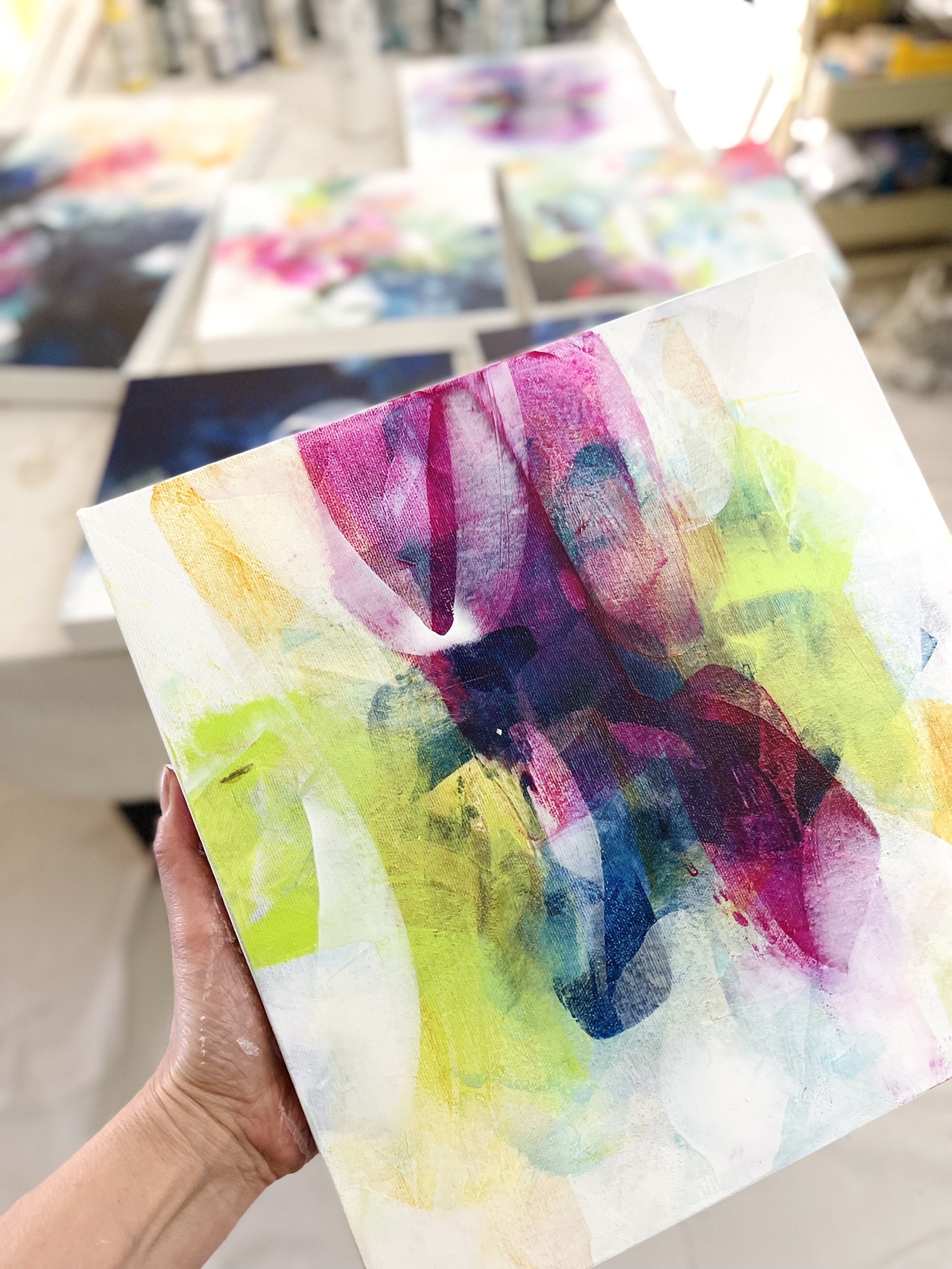What’s The Best Time To Start An Abstract Art Practice?
So you realized you want to dive into your own world of color and creativity and (probably also) share your creation with the world. But it's a lingering thought, perhaps you are not sure if you will enjoy it or sustain a dedicated art practice. Or you think you don't have the time, nor all the skills you think you need for the paintings you envision. Perhaps you feel you need to wait for a certain timeline or circumstance to be present before you establish a creative art routine.
As with most things in life, we can overthink if it's the right time for something we want to pursue, or where to start, what we need to have or know before starting. We may feel the need to be ready or confident enough to create and share what we create with the world. Yet feeling ready or feeling confident is something best achieved through action.
There’s no perfect time to start. Having the desire to create is actually all that's needed. But as we all know, things often don't feel so simple. So let's just dive in deeper into this topic, shall we?
Starting a regular art practice can be very exciting, especially as an abstract painter (which is what my experience is, but any art genre would be exciting for that matter!). Yet figuring out the right time to take that first step might feel a bit overwhelming. I want to share a few thoughts to help you embrace your artistic journey.
1. Follow Your Passion, Don't aim for Perfection
You've likely learned that art is all about passion and expression. Over the years, you already may have honed some painting skills and even discovered the style in which you love to create. Starting your abstract art journey doesn't mean you have to be perfect; it's about embracing your growth and evolving as an artist. With abstract painting, it's about breaking away from the confines of realism and traditional techniques and letting your feelings and imagination lead your creation. And with that, there’s no goal of flawless perfection. I encourage you to let go of the pressure for perfection and instead focus on the pure joy of creating art that speaks to your heart. Be open to the idea that your work will evolve and improve with time and practice. Give yourself permission to make mistakes and learn from them. Every "mistake" will be a stepping stone toward discovering new techniques and styles that are uniquely yours.
2. Embrace Fear
Fear can often creep up, even for seasoned artists, and fear of failure or judgment can paralyze ones artistic aspirations. But remember, fear is normal and yet embracing new challenges is what makes us grow. Abstract art is an opportunity to breaking free from constraints, to push your boundaries and let your imagination run wild. Abstract art is all about embracing the unknown and allowing your intuition to guide your creative choices. Fear often arises from not knowing the outcome, but that's precisely where the magic happens with abstract painting! So turn those fears into motivation for your creativity. You've conquered obstacles before, and this journey will be no different – it's a chance to surprise yourself with what you can achieve.
3. Align Your Creative Journey with Life's Rhythms
You've likely noticed that life's moments of change or deep reflections about life often coincide with bursts of creative inspiration (they did that for me and still do). Maybe you've hit a turning point, like a new job, retirement, maybe a divorce/break-up, a loss, or a birthday that's making you reflect. Such times might just be life's way of telling you, "Let's create something" So, when those nudges come, take them as a sign that it's time to unleash your inner artist. Let your instincts guide you in your artistic endeavors. And if for whatever reason the journey of life feels more challenging for you at this time, art will most likely also offer a healing quality (it certainly did for me when things were a bit rough).
4. Creating Your Art Nook
There may be the question of whether you have the required space to create. Do you have a corner in your room that can be the home for your artistic explorations? That's all you need to create your dedicated art space. There's no need for a fancy studio; just find a comfortable spot where you can feel inspired and come back day after day to create. Keep your art supplies nearby so that you feel invited to create at any given time. Being in proximity to a sink does help, but it's not a must. If you will be painting on a flat surface (as I do) a corner of a table or space on the counter might be something you'll want. Otherwise an easel in a corner will do as well. You can protect any surface (table, counter, floor) with some protective sheet.
5. Finding Community and Inspiration
Engaging with a community of other creatives can be very beneficial. Surround yourself with like-minded individuals (whether in person or online) who share your passion for abstract art. You can attend workshops, join art classes, or participate in online forums to build meaningful connections that will inspire you and instill confidence as you embark on your art practice and develop your unique style. When I started to paint, I was deeply inspired by what I saw was being created by wonderful artists (both new or experienced). Their journey gave me so much inspiration and excitement to create my own work. And in our day and age, it’s so easy to see what others create and let our creative juices flow.
To conclude, I truly believe that any time is a good time to start creating. You never know what you will feel and discover if you don’t start. There's no "perfect" time to start your abstract art journey; it's all about following your heart's desires. Embrace all the imperfections along the way and remember, art is about the joy of creating and expressing yourself. So, put those fears aside, trust your instincts, and dive into the world of painting with joy. It's your adventure, your canvas, and your chance to let your creativity soar.
Happy painting!



